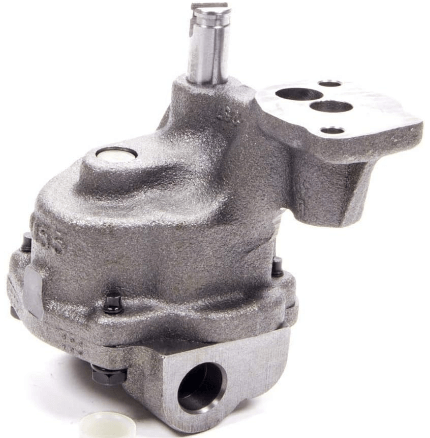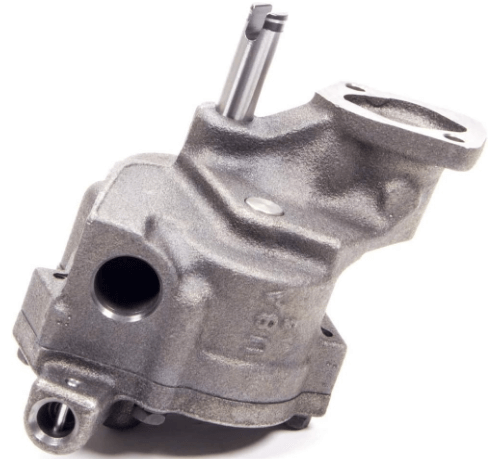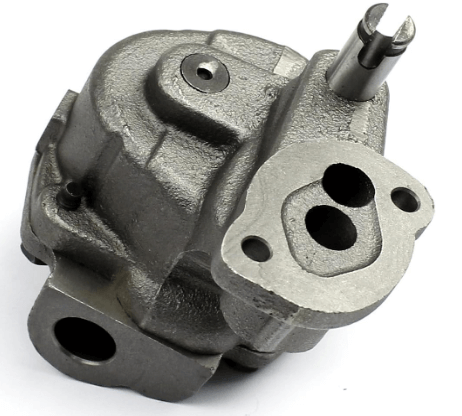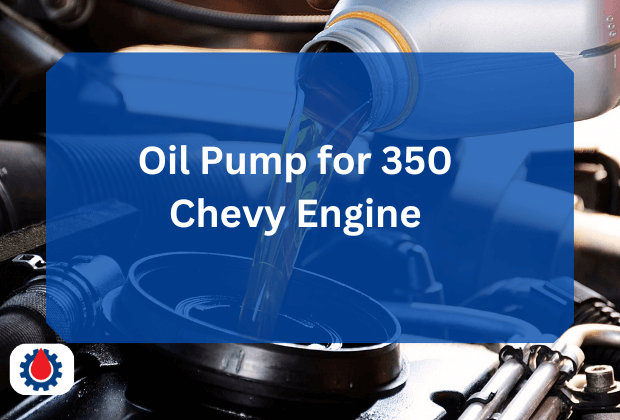This post guide explores the role of the oil pump in a 350 Chevy engine, factors to consider when choosing one, and highlights three reliable oil pumps available. Let’s jump in.
Oil Pump for 350 Chevy Engine
1. Melling M55 Oil Pump

This standard-volume, standard-pressure oil pump is a go-to for stock or mildly modified 350 Chevy engines. It’s designed for reliability in street applications, offering consistent oil flow for engines with standard bearing clearances.
Melling is a trusted name in aftermarket parts, and this pump is a direct replacement for OEM units, making it ideal for rebuilds or restorations.
- Features:
- Standard-volume output for stock engines
- Wet sump design, compatible with 7-inch oil pans
- Cast iron housing for durability
- No pickup included; requires separate purchase
- Budget-friendly for street-driven vehicles
2. A-Premium High Volume Oil Pump

For those building a performance-oriented 350 Chevy, this high-volume oil pump delivers increased oil flow to support engines with looser clearances or higher RPMs.
Compatible with a range of Chevy small-block engines, it’s a versatile choice for enthusiasts looking to boost lubrication in modified setups. The pump is designed to work with deeper oil pans, ensuring adequate oil supply.
- Features:
- High-volume output for enhanced lubrication
- Compatible with 7.25–7.5-inch oil pans
- Includes pre-welded pickup tube for secure installation
- High-pressure spring option for added reliability
- Suitable for street and light performance use
3. Speedmaster PCE303.1001 Oil Pump

This standard-volume, standard-pressure oil pump is crafted for street-driven 350 Chevy engines, emphasizing quality construction. Made from high-quality steel, it’s hand-turned and pressure-tested to ensure performance.
It’s a solid choice for budget-conscious builders seeking a reliable, no-frills pump for daily driving or mild performance applications.
- Features:
- Standard volume and pressure for stock builds
- Wet sump design, fits standard oil pans
- High-quality steel construction for longevity
- No pickup or driveshaft included
- Individually tested for consistent performance
Related Electric Engine Oil Pump(Top 5 Best 2025)
Installation and Maintenance Tips
When installing your oil pump, always prime it with assembly lube or oil to ensure immediate pressure on startup. Use a drill-driven priming tool for dry engines to avoid damage.
Secure the pickup tube tightly, and consider tack-welding press-fit designs to prevent loosening. Match the pump to your oil viscosity (e.g., 10W30 for standard clearances) to optimize flow and pressure.
Regularly check oil pressure after installation, as zero pressure during cranking may indicate improper priming or installation issues. For street engines, a stock pump often outperforms high-volume options, as excessive oil flow can reduce horsepower by increasing drag.
Related Priming Engine Oil Pump(How to do it right way & Tools)
Factors to Consider
Before purchasing, verify compatibility with your 350 Chevy small block Gen I engine. Check the oil pan depth (typically 7–8 inches for stock pans) and whether the pump includes a pickup tube.
Quality matters, look for pumps made from durable materials like billet steel or high-quality castings to avoid issues like housing cracks or gear wear. Some pumps offer bolt-on pickups for added reliability over press-fit designs, which can loosen under vibration.
Also, consider whether you need to prime the pump before installation to ensure immediate oil flow. For street use, a stock-replacement pump is often sufficient, while performance builds may benefit from enhanced designs.
Related Engine Overheating After Oil Change(6 Causes + Solutions)
FAQs
How do I know if an oil pump is bad?
Symptoms include low oil pressure (below 10 PSI at idle), engine knocking, or a lit oil pressure warning light. Check for metal shavings in the oil or inconsistent pressure readings.
What oil pressure should a 350 Chevy have?
A healthy 350 Chevy should have 10 PSI per 1,000 RPM, typically 20–40 PSI at idle and 40–60 PSI at cruising RPM with standard bearing clearances.
How do I know when my oil pump needs replacing?
Replace the oil pump if you notice persistent low oil pressure, unusual engine noises, or during an engine rebuild, especially if the pump is worn or damaged.
What type of pump is best for oil?
Standard-volume pumps suit stock or street engines; high-volume pumps are best for high-RPM or performance builds with looser clearances, while high-pressure pumps support racing applications.
What oil pressure is too high?
Oil pressure above 80 PSI at operating RPM is excessive and can strain seals, gaskets, or the oil pump, potentially causing leaks or damage.
What size is the oil pressure thread on a Chevy 350?
The oil pressure sending unit thread on a Chevy 350 is typically 1/8-inch NPT for the block fitting, though some use 1/4-inch NPT depending on the sensor location.
Final words
Always verify compatibility with your oil pan and engine specs, and prioritize quality to avoid common issues like housing failures or loose pickups.




